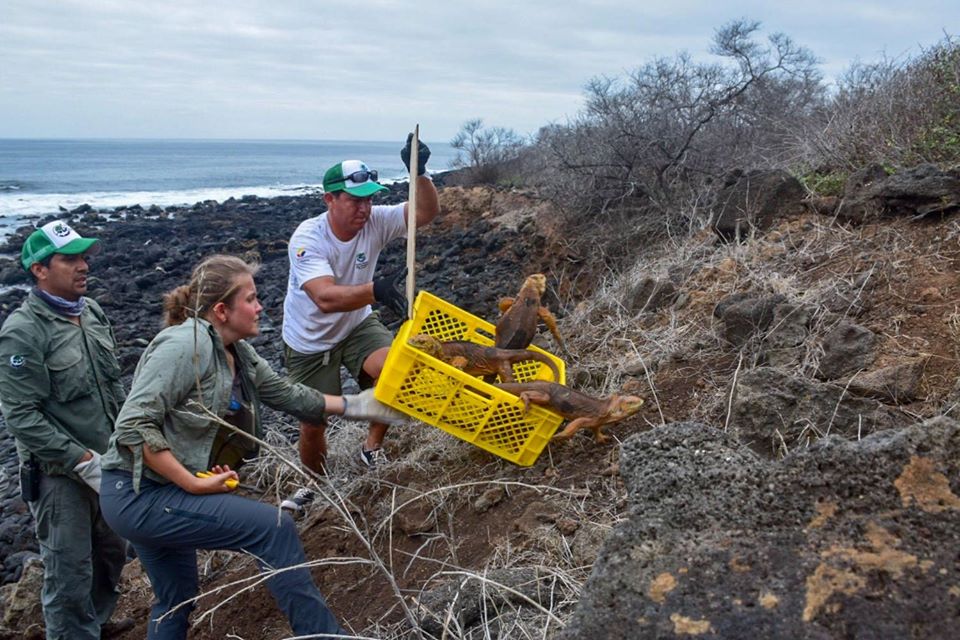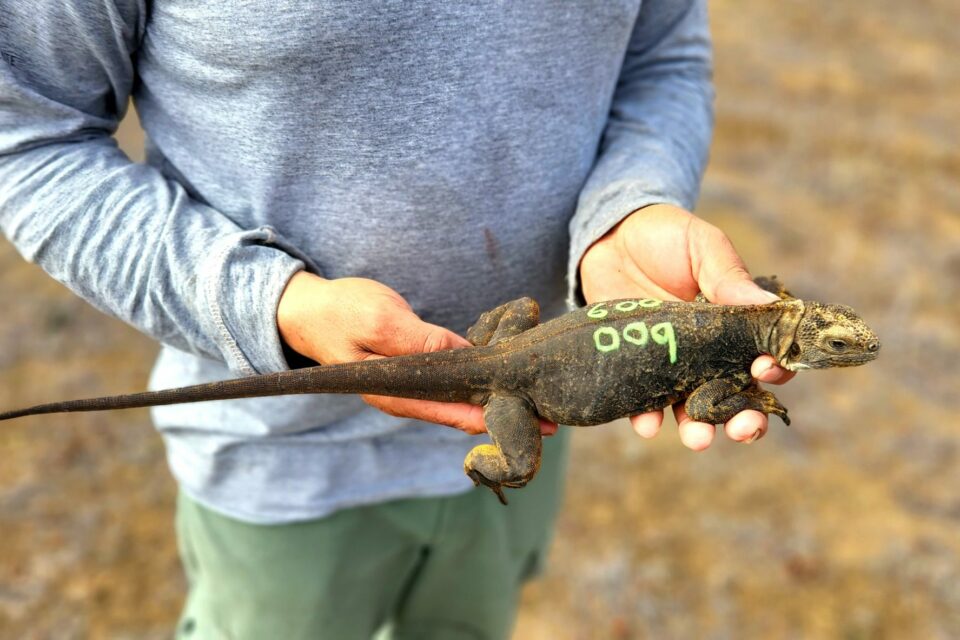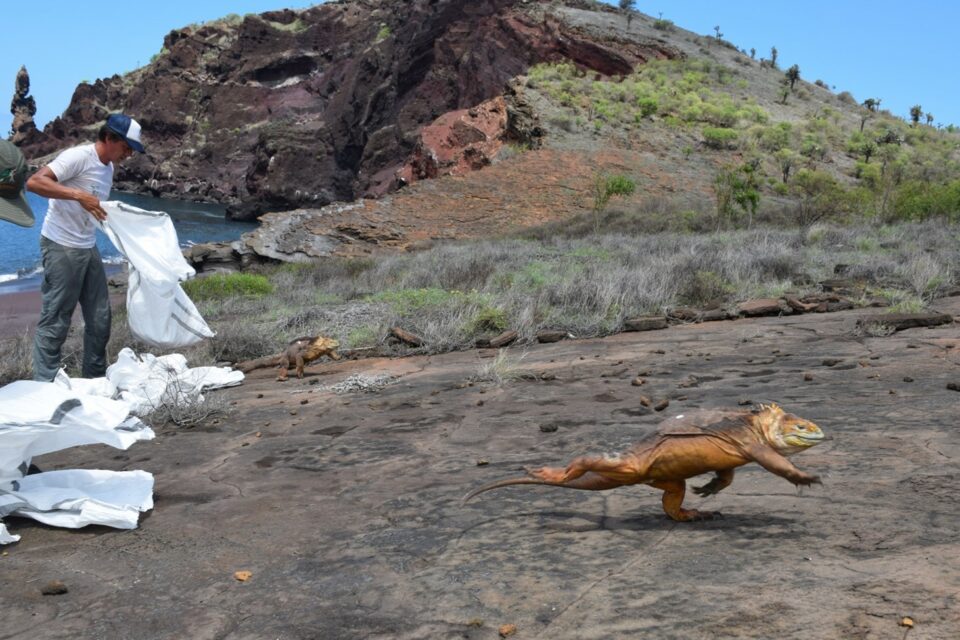

Project update: Land iguanas
There were momentous steps forward in land iguana conservation during 2019 as 2,150 land iguanas were released onto Santiago island by GCT’s project partners.
There were momentous steps forward in land iguana conservation during 2019 as 2,150 land iguanas were released onto Santiago island by GCT’s project partners, Galapagos National Park, Island Conservation and Massey University. The reptiles had been locally extinct on Santiago island for over 100 years due to the threats from invasive species. Since their release, the iguanas have been thriving in their new home and will continue to be monitored by the field team while their population grows and they promote vegetation restoration on the island through seed dispersal.
Galapagos land iguanas (Conolophus subcristatus) are endemic to Galapagos and found nowhere else on Earth. They are currently listed on the IUCN Red List as Vulnerable, but this status has not been reviewed since 1996. They’re threatened by the effects of invasive species on the Islands such as feral cats and 80% of the global population consists of ageing individuals with limited reproductive success.

Galapagos land iguana © Neil Bruce
Until 2019, Galapagos land iguanas had not been recorded on Santiago island since Charles Darwin visited the Enchanted Isles in 1835. He described the lowlands of Santiago as saturated with “infinite numbers of a large herbivorous lizard”. However, by the time the California Academy of Sciences visited in 1903, they found only skeletal remains. They had become locally extinct due to competition for food and predation by species introduced by humans, such as feral pigs and goats which have now been removed from the Island.
In order to secure a stable future for this species, and to restore Santiago island’s ecological health, the Galapagos Land Iguana Project aims to gain more understanding into the decline of these reptiles. By tagging individual land iguanas, the team, led by Dr Luis Ortiz-Catedral, gathered as much data as possible to assess the current population size and health status across Fernandina, Isabela and Santa Cruz islands. This has provided the information needed to reintroduce land iguanas to Santiago island. The reintroduction aims not only to boost the survival of Galapagos land iguanas but also to help restore Santiago’s ecological health, as the iguanas are important dispersers of seeds.
The reintroduction work first began in 2018 when 2,150 iguanas were captured on North Seymour island which had a population of over 5,000 individuals – far too many for the island’s food supply to support. The captured iguanas were a mix of adults and juveniles with 60% of them female and 40% male. Then in January 2019 the 2,150 Galapagos land iguanas were translocated to Santiago island from North Seymour island. The animals were released at sites which were deemed to have suitable ecosystems. This was defined as somewhere with Scalesia scrub, included a good amount of vegetation cover and the presence of ‘arenales’ (these are areas of low vegetation cover with loose soil, where iguanas can dig burrows and eventually nesting areas), and an abundance of vegetation for them to feed on, specifically the availability of Opuntia cacti, which is their preferred food.

Land iguana release onto Santiago island – © Parque Nacional Galápagos
After the release, they were left undisturbed for a month to settle into their new home. Having been microchipped, they were then monitored from February 2019 where the team conducted site visits to locate the iguanas and assess how far they had dispersed from the release site. In general, the iguanas were behaving normally and seen by the researchers sunbathing or foraging. In August 2019 the team returned to measure any changes in body mass since release. Overall the iguanas had a 9-12% increase in body weight, most likely due to the increase in food availability in comparison to North Seymour island.
Help us to continue to protect Galapagos land iguanas and the other unique flora and fauna of Galapagos by donating today.


Conservation success: Reintroduced land iguanas breed on Santiago island

Reintroducing land iguanas to Santiago island: an update


